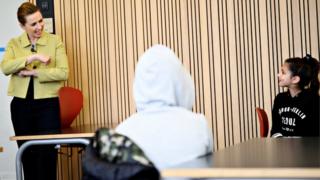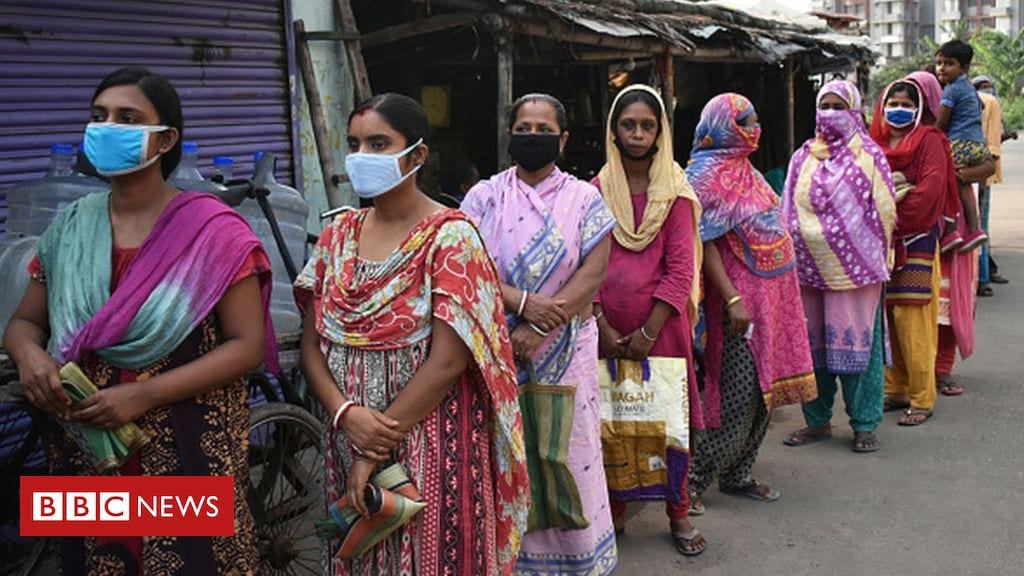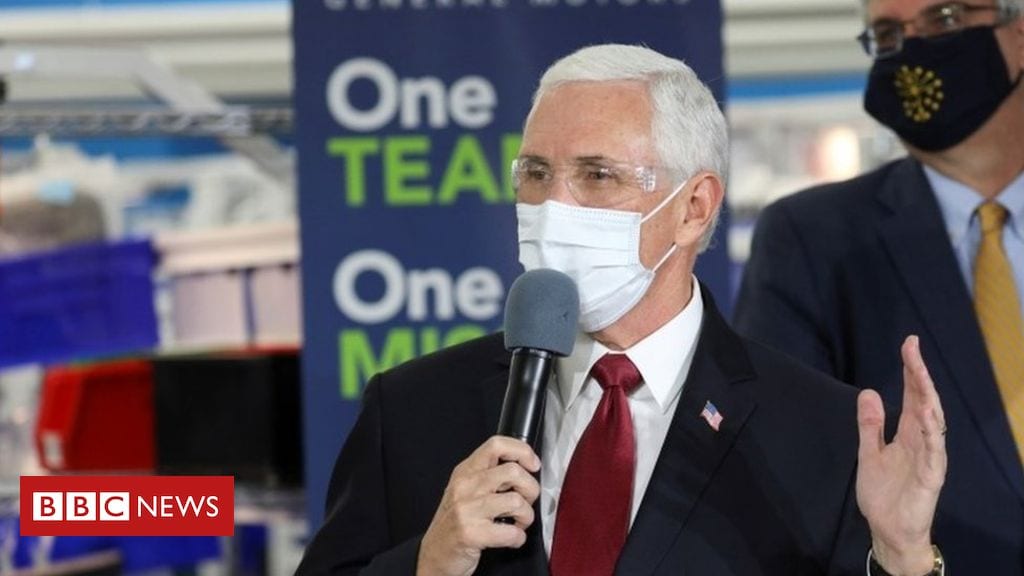[ad_1]

Image copyright
Reuters
The Danish prime minister welcomed children on their return to school in Valby on Wednesday
Children up to the age of 11 are returning to nurseries and schools across Denmark, as the government becomes the first in Europe to relax coronavirus restrictions on education.
Prime Minister Mette Frederiksen welcomed children as they went back to school in the capital Copenhagen.
Denmark was among the first countries in Europe to impose a lockdown, with schools closed on 12 March.
Infection rates have been low but critics warn the strategy is risky.
“We’re all a bit nervous and we’ll have to ensure that we stick to hygiene rules,” Elisa Rimpler of the BUPL, the Danish Union of Early Childhood and Youth Educators, told the BBC.
“We have a lot of washing hands during the day. We don’t have masks and we have to keep a good distance from each other so that’s a very difficult task.”
Image copyright
AFP
Nurseries, kindergartens and primary schools have been allowed to open their doors after over a month
Denmark is one of a number of countries that have taken steps to relax lockdown measures this week:
- Austria reopened thousands of smaller shops on Tuesday
- The Czech government has set out a five-stage timetable
- Spain has allowed the reopening of non-essential businesses
- Italian bookshops and clothing stores for youngsters have reopened their doors in some regions
European Commission chief Ursula von der Leyen is to set out a roadmap on Wednesday for lifting restrictions across the 27-state bloc.
German Chancellor Angela Merkel will discuss easing restrictions with the country’s 16 state premiers on Wednesday, with the most populous state, North Rhine-Westphalia, already planning a return after the Easter holiday break.
What has Denmark done?
Denmark has so far reported 299 deaths and 6,681 positive cases, although many more are thought to be infected.
It has been widely praised for its swift action in restricting movement before Covid-19 infections were able to spread across the population – leading it to be compared to South Korea.

Media playback is unsupported on your device
The head of the SSI infectious diseases institute said Denmark had managed to reduce the number of other people that one positive case infects from 2.6 people before the 12 March lockdown, to 0.6.
Tyra Grove Krause told Danish TV that the success had proved how social distancing, hygiene and other measures such as working from home could work.
The prime minister has said so much progress has been made that she is discussing with political partners how to push forward with a further easing of the restrictions.
On a visit to a school in the Valby area of the capital, Ms Frederiksen said she understood that some parents still preferred to keep their children at home.
Some political figures have expressed concerns that guidelines setting out who should go back to school are unclear. The schools themselves will decide whether staff in an at-risk category should be at work or remain at home.
What is happening in Germany?
Angela Merkel is holdings talks with cabinet ministers on Wednesday before discussing relaxing measures with Germany’s 16 states.
Chief among the measures being assessed is how to reopen the country’s schools, which is one of the recommendations of the 26 scientists in the Leopoldina Academy of Sciences that advises the government.
Schools would have to observe hygiene rules as they opened, then shops and restaurants could follow as long as social distancing was observed, the academy said. Everyone would have to wear masks in public, with the strategy based on reducing the rate of infection.
Germany’s RKI public health institute has said the number of deaths has risen by another 285 in the past 24 hours to 3,254, which is relatively low for a population of 83 million. It now has 127,584 positive cases.


















